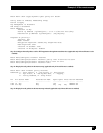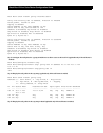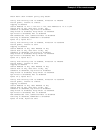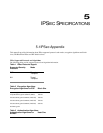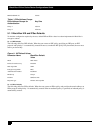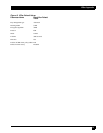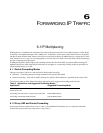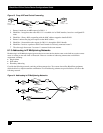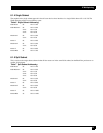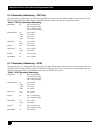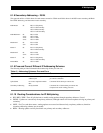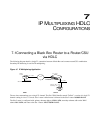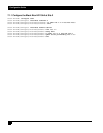
6
F
ORWARDING
IP T
RAFFIC
6.1IP Multiplexing
IP Multiplexing is a method for the transparent forwarding of IP packets between LAN and WAN interfaces. LAN to WAN
forwarding is accomplished through a Proxy ARP process. A Black Box system maps a unique MAC address to each WAN
link then responds with this MAC address when a device on the LAN broadcasts an ARP request for a remote device. These
MAC addresses serve as “tags” for forwarding packets received on the LAN. WAN to LAN and WAN to WAN forwarding is
based on configured forwarding entries.
IP Multiplexing differs from bridging and switching in that it does not flood traffic or perform address learning. IP
Multiplexing devices differ from routers in that they do not appear as a router hop, and they cannot be specified as a
default router/gateway on a LAN.
6.1.1 Packet Forwarding Modes
There are two modes for WAN to LAN and WAN to WAN packet forwarding
IP Routes – Forwarding based on routing statements, both specific and default.
Source Forwarding – Forwards all traffic arriving on a specified WAN bundle to a specified device on the LAN.
The following table provides information about applications and a suggested forwarding mode for each.
Table 5 Applications and Suggested Forwarding Modes
6.1.2 Proxy ARP and Packet Forwarding
In the simple network example below, router 1, router 2, and both Black Box Ethernets are on a single 29-bit IP subnet.
Consider the sequence that occurs when router 1 pings router 2.
Application Suggested Forwarding Mode
Forwarding traffic from different WAN links to separate
routers on the LAN
Source Forwarding
Forwarding all WAN traffic to a single router on the LAN Default IPMux Routes
Forwarding to both LAN and WAN router Specific IPMux Routes



